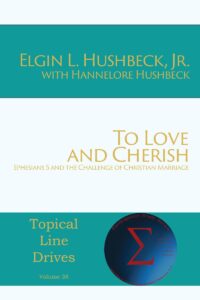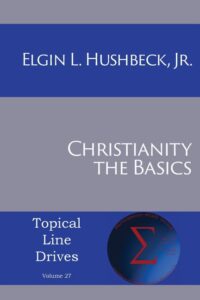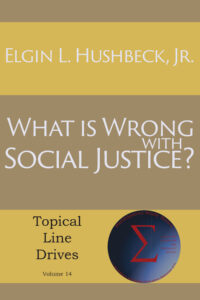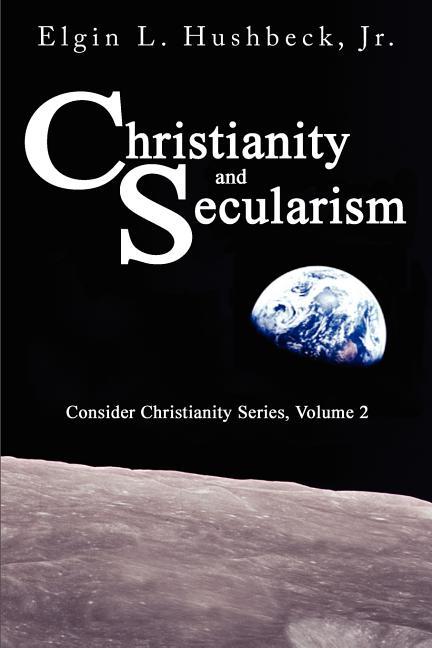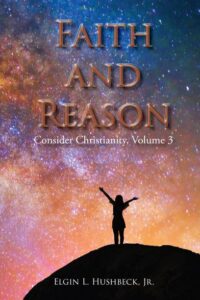The Epistles of John: Living in Truth and Love. 1 John 7-8
Saturday, December 17th, 2011 by Elgin HushbeckWeek 15: Dec 18, 2011
This week we continued to unpack John’s arguments. While his teaching were largely aimed at addressing those who had broken away from the church, they have a lot to say about how we live our life today.
Study
ii. Three Proposition Refuted (1:6-10)
1:7 But if we keep living in the light as he himself is in the light, we have fellowship with one another, and the blood of Jesus his Son cleanses us from all sin.
– Having refuted the first claim, John now gives the counter teaching.
But if we keep living in the light as he himself is in the light
– Note the contrast between “If we say…” and “But if we keep living.” While those who had left were making claims about a relationship, it is what we do that is most important. In this case, we must live in the light. As was made clear in the Gospel of John, Jesus is our example of how we are to live. We should seek to follow him and do his will.
we have fellowship with one another
– The first result of right living is fellowship. It is the fellowship of believers that is in focus here, but all fellowship depends on “living in the light.” This is because sin damages our ability to have real fellowship with one another. This can most easily be seen in the bonds between a husband and a wife. The sin of adultery seriously damages that that relationship such that, even if forgiven, it can take a long time to heal. But the sin does not need to be as significant as adultery to cause damage. Lots of “little things” that seemingly could be brushed off can still have a cumulative effect and can keep a deeper relationship from ever forming in the first place.
It can seem strange that numerous studies have clearly demonstrated that the more and deeper the relationships that a person has, the more joy they will have in their lives. And yet in recent years such relationships have been harder to form and harder to maintain. But it is only strange until one realizes that over the same period society as a whole has devalued and even ridiculed the notion of “living in the light.”
the blood of Jesus his Son cleanses us from all sin
– The idea that we should be living in the light does not mean we will never sin. John realizes that we will fail, but that we can be cleansed of our sins. One question is why does John refer to being cleansed here rather than forgiven? While some see the concepts as synonymous, I believe they are different and that here John has a particular reason for referring to cleansing. The reason goes back to his starting premise: God is light, and in him there is no darkness. We cannot be in fellowship with God while we have the stain, or darkness, of sin. Thus, the fact that we are cleansed is key to John’s claim that we have fellowship. This is also a repudiation of those who left, for they were claiming that sin did not matter. In short, they were claiming that darkness could be in God.
1:8 – If we say that we do not have any sin, we are deceiving ourselves and we’re not being truthful to ourselves.
– Here we come to the second claim: we do not have any sin. In this claim it is easy to see a rebuttal to John’s refutation of their first claim. John countered their claim to fellowship by pointing out that those who had left were walking in darkness. So you can almost hear them respond, “I am not walking in darkness because I do not have any sin.” In later Gnostic writing there were different views of this, both of which could be covered by the Greek construction here. Some argued that sin had no hold over them. Others argued that sin was just physical and that only the spiritual mattered. But either way they were arguing that the way they lived was no a barrier to fellowship with God.
– John refutes this second claim by pointing out that if we make such a claim, we are deceiving ourselves. We, after all, know ourselves better than anyone else, so to think that we have no sin is first and foremost to lie to ourselves.
The idea that we can lie to yourselves is at first blush a seeming contradiction. To lie, is to say anything with the intent of deceiving; but how could we deceive ourselves without knowing that we are deceiving ourselves? Yet while intellectually a problem, in reality the concept is so common place that it is not that strange at all. We deceive ourselves all the time. This is one of the key aspects of coming into a deeper relationship with God. A true relationship cannot be built on lies, so the first step in a deeper relationship is being honest with ourselves and with God about who we really are. Before we can really know God, we must first know ourselves. We must break through all the rationalization and self-justifications and see ourselves as God sees us. This can be a very difficult and even painful process, but it is important to remember that we can seek forgiveness and with God’s help become the person God wants us to be, a person who does not need to hide behind lies and rationalizations.
Questions and Discussion.
A lot of the discussion this week centered on the concept and value of true fellowship. True fellowship is a deep and abiding relationship, a relationship where one can be open about their lives, their struggles and their failures. While the amount of true fellowship in a person’s life is perhaps the clearest indicator of a truly joyful life, it is also difficult obtain and once obtained is easily damaged. True fellowship requires openness, and openness requires trust. At its core sin damages relationships, both with God and with each other. We also spent time taking about how societal pressures push toward casual swallow relationship, rather than true fellowship.
The class is taking a break for Christmas and the New Year, and will resume on Sunday January 8th 2012 where we will continue in 1 John 9
If you have question or comments about the class, feel free to send me an email at elgin@hushbeck.com and be sure to put “Epistles of John” in the header.
See here for references and more background on the class.
Scripture taken from the Holy Bible: International Standard Version®. Copyright © 1996-2008 by The ISV Foundation. ALL RIGHTS RESERVED INTERNATIONALLY. Used by permission. www.isv.org
Note: Some places I have modify the text from the ISV version. Passages that I have modified have been noted with and * by the verse number and the ISV text is included in a footnote.
